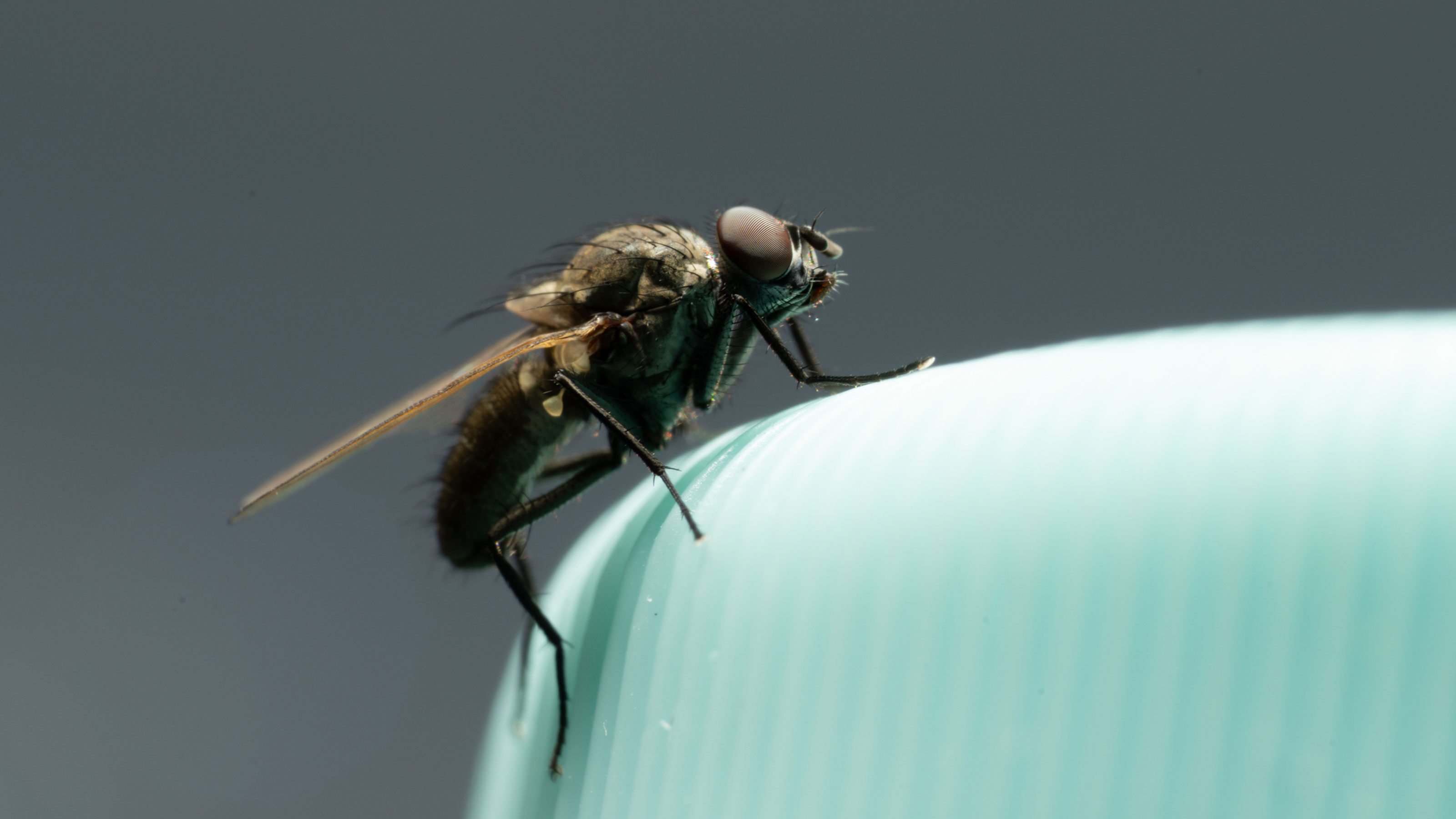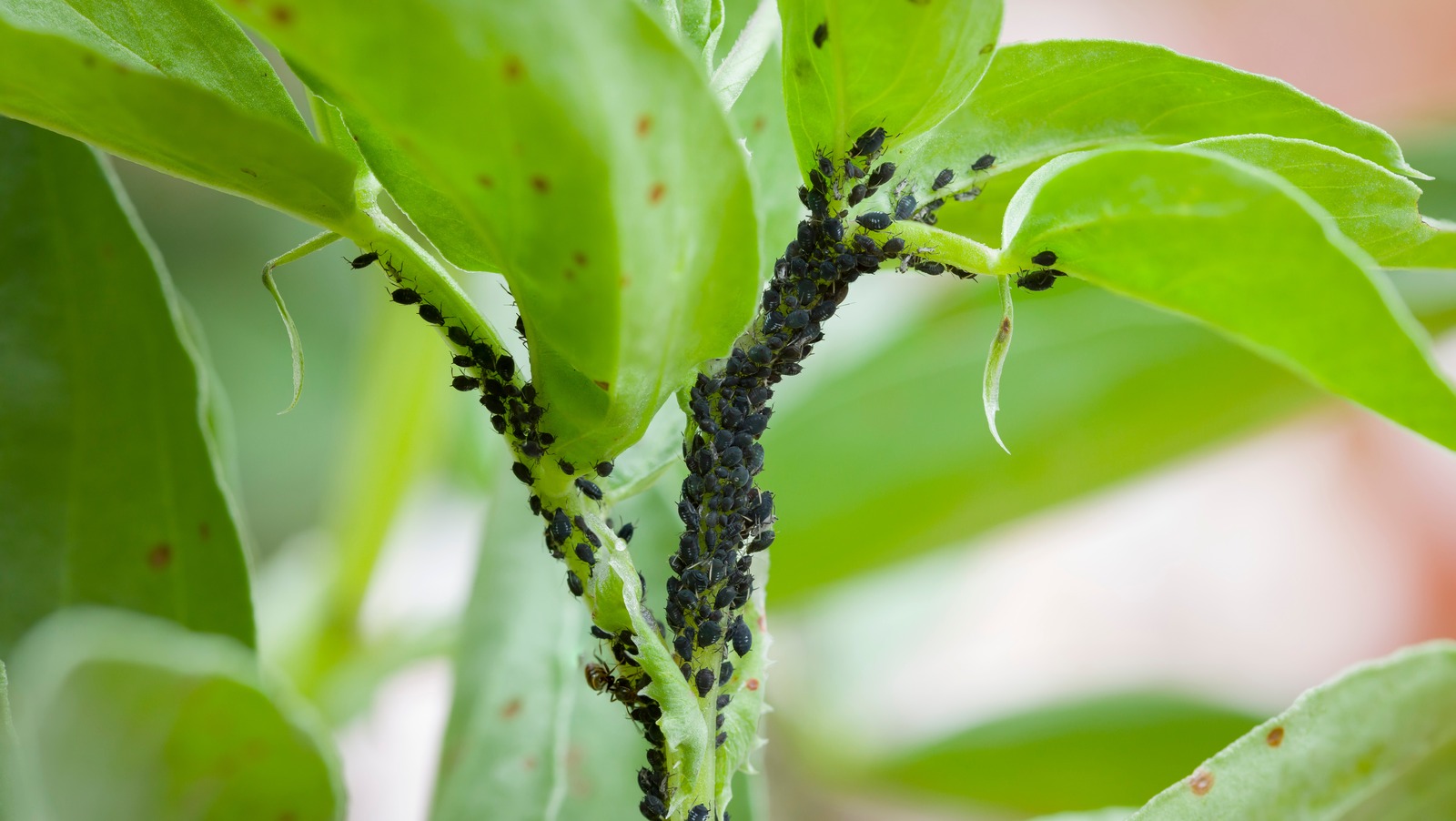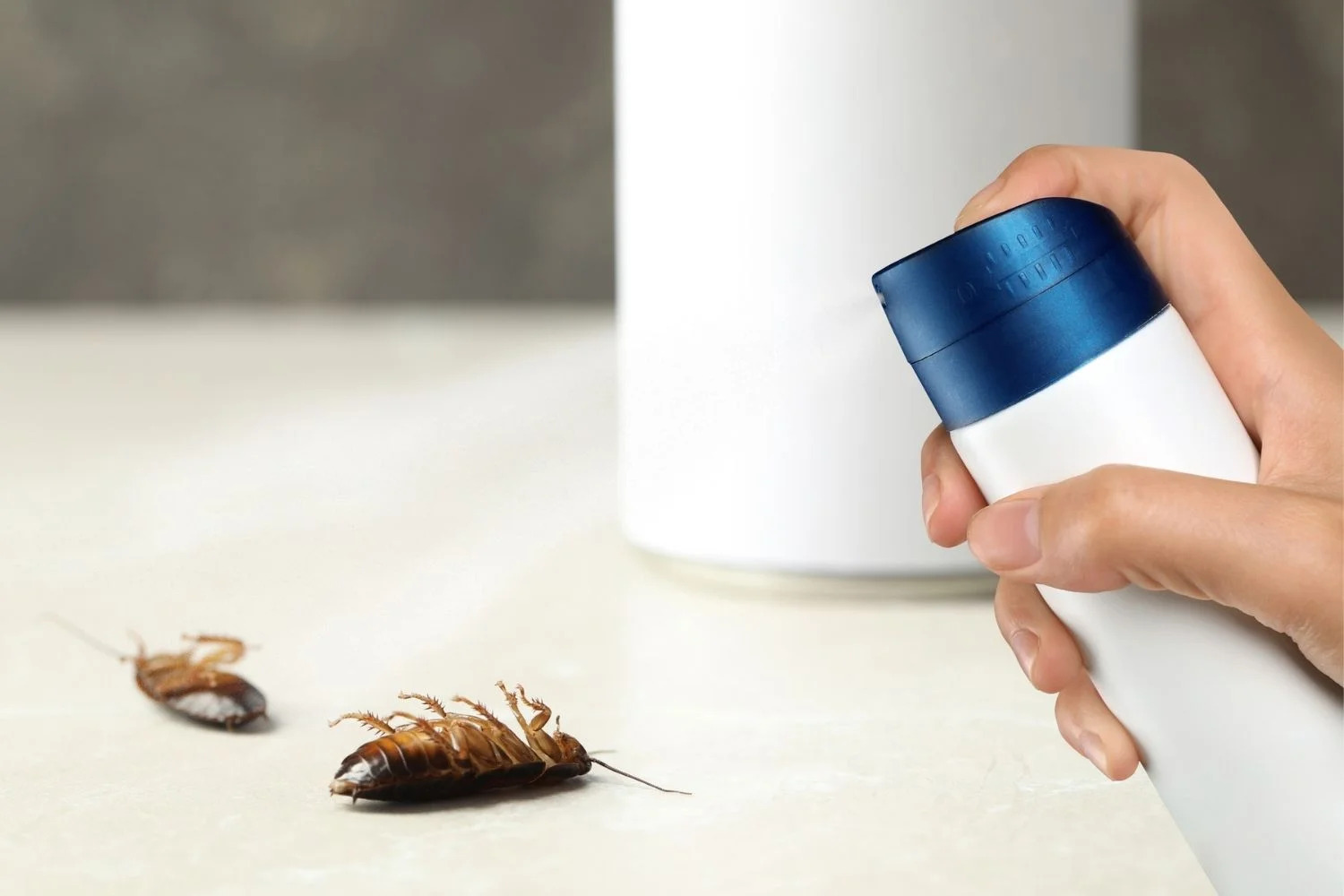Home>Gardening News and Trends>Latest News>How To Get Rid Of Insects In Basement


Latest News
How To Get Rid Of Insects In Basement
Modified: January 22, 2024
Discover the Latest News on How to Get Rid of Insects in Basement - Effective Methods to Eliminate and Prevent Infestations. Take action now and reclaim your basement!
(Many of the links in this article redirect to a specific reviewed product. Your purchase of these products through affiliate links helps to generate commission for Chicagolandgardening.com, at no extra cost. Learn more)
Table of Contents
- Introduction
- Step 1: Identify the types of insects in your basement
- Step 2: Remove any food sources
- Step 3: Eliminate excess moisture
- Step 4: Seal any cracks or gaps
- Step 5: Use insecticides or natural repellents
- Step 6: Maintain regular cleaning and organization
- Step 7: Seek professional pest control assistance if necessary
- Conclusion
Introduction
Welcome to our comprehensive guide on how to get rid of insects in your basement. If you’ve noticed unwanted insects making themselves at home in the lower level of your house, you’re not alone. Basements are notorious for attracting various types of insects due to their dampness, darkness, and potential food sources. While having insects in your basement is common, it can be quite frustrating and even pose a risk to your home’s structural integrity and your family’s health.
In this article, we will walk you through the steps to identify the types of insects present in your basement and provide effective strategies to eliminate them. It’s important to note that the methods and solutions discussed here are applicable for common basement insects such as ants, spiders, silverfish, centipedes, and earwigs. However, for infestations involving more harmful or dangerous insects like termites or bedbugs, we highly recommend seeking professional assistance.
By following the step-by-step instructions outlined in this guide, you’ll be able to regain control of your basement and create an inhospitable environment for insects to thrive. From removing food sources to sealing cracks and gaps, we’ll cover everything you need to know to keep your basement free from unwanted insect intruders.
Remember, getting rid of insects in your basement is not a one-time task. Ongoing maintenance and regular cleaning will be necessary to prevent them from coming back. So let’s dive in and learn how to reclaim your basement from pesky insects!
Step 1: Identify the types of insects in your basement
The first step in getting rid of insects in your basement is to identify the specific types of pests you’re dealing with. This will help you choose the most appropriate methods to eliminate or deter them. Here are some common basement insects and how to identify them:
- Ants: Ants are social insects that live in colonies. They are typically small with segmented bodies and can be found in various colors. Look for their trails, especially near sources of food.
- Spiders: Spiders have two body segments and eight legs. They come in different sizes and colors, with some being venomous. Look for webs and egg sacs in corners, ceilings, and dark areas.
- Silverfish: Silverfish are small, wingless insects with long antennae and a fish-like appearance. They are usually silver or gray in color. Look for their presence in damp, dark areas, such as behind boxes or in stored items.
- Centipedes: Centipedes have long, segmented bodies and many legs. They are usually brown or reddish-brown. Look for them in damp areas with access to insects, such as around drains or near water sources.
- Earwigs: Earwigs are elongated insects with pincers at the end of their abdomen. They are typically brown or black. Look for them in areas with moisture, such as under damp rugs or in moist soil.
If you’re unsure about the specific type of insect you are dealing with, consider capturing one or taking a clear photo to help with identification. You can then consult online resources or local pest control professionals for further assistance. Identifying the insects accurately will ensure you can take targeted measures to eliminate them effectively.
Step 2: Remove any food sources
Once you have identified the types of insects in your basement, it’s crucial to remove any potential food sources that may be attracting them. Insects are always on the lookout for accessible food, and eliminating these sources will help discourage their presence. Here’s what you can do:
- Store food properly: If you have a pantry or storage area in your basement, make sure all food items are stored in airtight containers. This includes dry goods like cereals, grains, and pet food. Remove any open or expired food items that may serve as a feast for insects.
- Clean up spills and crumbs: Insects are drawn to even the tiniest traces of food. Regularly clean up any spills and crumbs from countertops, floors, and other surfaces in your basement. Pay special attention to areas near appliances and under furniture.
- Dispose of garbage properly: Don’t let your basement become a haven for insects by leaving garbage exposed. Use sealed trash cans and dispose of trash regularly. Avoid storing organic waste in your basement, as it can attract insects and create unpleasant odors.
- Keep pet food controlled: If you keep pet food in your basement, be mindful of how it’s stored. Store it in sealed containers and keep feeding areas clean. Don’t leave pet food bowls out overnight, as insects are nocturnal and will take advantage of the opportunity to feed.
- Remove standing water: Standing water can attract pests and serve as a breeding ground. Check for any water leaks or areas of excessive moisture in your basement and address them promptly. Repair leaks, use dehumidifiers, and improve ventilation to eliminate excess moisture.
By removing or properly storing potential food sources, you’ll significantly reduce the attractiveness of your basement to insects. Not having a readily available food supply will discourage them from taking up residence and increase the likelihood that they will move elsewhere in search of sustenance.
Step 3: Eliminate excess moisture
Excess moisture in your basement can create a welcoming environment for many types of insects. By reducing moisture levels, you can make your basement less appealing to these pests. Here are some steps to eliminate excess moisture:
- Repair any leaks: Check for any water leaks or damp spots in your basement. These can be caused by faulty plumbing, cracks in the foundation, or poor drainage. Repair any leaks promptly to prevent further moisture buildup.
- Improve ventilation: Proper airflow is crucial in reducing moisture levels. Ensure that your basement is adequately ventilated by opening windows, using fans, or installing a dehumidifier. This will help circulate air and prevent the accumulation of moisture.
- Insulate pipes and walls: Insulating pipes can prevent condensation, which can lead to moisture problems. Similarly, insulate basement walls to minimize the transfer of moisture from outside and prevent dampness.
- Use a waterproof sealant: Apply a waterproof sealant to walls, floors, and cracks in your basement. This will create a barrier against moisture and prevent it from seeping in.
- Keep gutters and downspouts clean: Ensure that your gutters and downspouts are clear of debris and functioning properly. This will prevent water from pooling around the foundation of your home and potentially seeping into your basement.
By addressing excess moisture in your basement, you’ll not only discourage insects from taking up residence but also prevent the growth of mold and mildew, which can pose health risks. A dry and well-ventilated basement will create an inhospitable environment for insects and help safeguard the structural integrity of your home.
Step 4: Seal any cracks or gaps
Cracks and gaps in your basement provide easy access for insects to enter and make themselves at home. By sealing these entry points, you can prevent their entry and reduce the likelihood of infestations. Here’s what you can do:
- Inspect your basement: Take the time to thoroughly inspect your basement for any cracks, gaps, or openings in walls, floors, windows, and doors. Pay attention to areas where utility lines enter, as insects can enter through small gaps around pipes and wires.
- Use sealant or caulk: Once you have identified the cracks and gaps, use a high-quality sealant or caulk to fill them. This will create a barrier that prevents insects from entering your basement.
- Repair damaged screens: If you have windows or vents in your basement, ensure that they have properly fitting screens. Repair or replace any damaged screens to prevent insects from flying or crawling in through these openings.
- Install door sweeps: Install door sweeps on exterior doors to seal the gap between the bottom of the door and the floor. This will prevent insects from finding their way inside.
- Consider weatherstripping: In areas where windows or doors do not have a tight seal, consider adding weatherstripping to create a more secure barrier against insects.
Sealing cracks and gaps is an essential step in keeping insects out of your basement. It not only prevents current infestations but also helps to deter future ones. By taking the time to seal these entry points, you’ll create a more secure and inhospitable environment for insects, making it harder for them to invade your space.
Step 5: Use insecticides or natural repellents
If you have already taken preventive measures but still have a persistent insect problem in your basement, it may be necessary to use insecticides or natural repellents to eliminate them. Here are some options to consider:
- Insecticides: There are various insecticides available that are specifically designed for indoor pest control. Look for products labeled for use in basements and follow the instructions carefully. Apply insecticides to areas where insects are commonly found, such as along baseboards, around windows, and in corners.
- Dust and aerosol insecticides: Dust and aerosol insecticides can be helpful in treating hard-to-reach areas, such as cracks and crevices. These products can form a barrier and provide long-lasting protection against crawling insects.
- Natural repellents: If you prefer to use natural methods, there are several options available. Essential oils like peppermint, lavender, or tea tree oil can act as repellents for certain insects. Simply dilute a few drops of oil in water and spray in areas where insects are present. You can also try using vinegar, citrus peels, or cinnamon sticks to deter insects.
- Traps: In addition to insecticides and repellents, consider using traps to catch and eliminate insects. Sticky traps or pheromone traps can be effective in capturing crawling or flying insects.
- Professional pest control: If your infestation is severe or persists despite your efforts, it may be best to consult with a professional pest control company. They have the expertise and resources to effectively eliminate the insects in your basement and provide long-term solutions.
When using insecticides or natural repellents, always read and follow the instructions carefully. Take precautions to protect yourself, pets, and the environment. If you have concerns or are unsure about the best approach, consult with a professional to ensure safe and effective pest control.
Step 6: Maintain regular cleaning and organization
Maintaining regular cleaning and organization in your basement is key to preventing insects from returning. A clean and clutter-free environment makes it more difficult for pests to hide and find suitable breeding grounds. Here are some tips to help you keep your basement clean and organized:
- Regular sweeping and vacuuming: Regularly sweep or vacuum your basement to remove any dust, debris, or food particles that may attract insects.
- Declutter: Remove any unnecessary items or clutter from your basement. Clutter provides hiding places for insects and makes it more challenging to spot infestations.
- Keep storage items elevated: Store items like boxes or containers on shelves or raised platforms, rather than directly on the floor. This reduces the chances of insects nesting or feeding on stored materials.
- Regularly inspect stored items: Periodically inspect and rotate stored items to ensure they are not infested with insects. Discard any infested items in sealed bags or containers to prevent the spread of pests.
- Properly dispose of cardboard: Insects, particularly silverfish and cockroaches, are attracted to cardboard. Replace cardboard storage boxes with plastic containers or consider treating them with insect repellent.
- Keep drains and sinks clean: Clean and maintain drains and sinks in your basement to prevent buildup of organic material that can attract insects.
By maintaining cleanliness and organization in your basement, you create an environment that is less attractive and hospitable to insects. Regular cleaning and decluttering activities enable you to identify and address any issues early on, keeping your space insect-free in the long term.
Step 7: Seek professional pest control assistance if necessary
If despite your best efforts, you’re still struggling to get rid of insects in your basement, it may be time to call in professional pest control assistance. Pest control professionals have the knowledge, experience, and resources to effectively eliminate stubborn infestations and prevent future ones. Here are some reasons why you may need to seek professional help:
- Severe infestation: If your basement is heavily infested with insects, DIY methods may not be sufficient to eradicate the problem entirely. Professional pest control technicians can assess the situation and implement targeted treatments to eliminate the infestation.
- Hidden infestation: Insects can find hiding spots in the smallest crevices and cracks. Professional pest control experts have the expertise to locate these hiding places and treat them effectively.
- Specialized knowledge: Certain pests, such as termites or bedbugs, require specialized knowledge and techniques for effective elimination. Pest control professionals are trained in handling these specific pests and can provide appropriate treatment options.
- Long-term prevention: Professional pest control companies can not only eliminate current infestations but also provide recommendations and ongoing maintenance to prevent future recurrence.
- Safety considerations: Some insecticides and treatment methods may pose health and safety risks. Pest control professionals are trained in the proper use of these chemicals to ensure the safety of your family and pets.
If you decide to seek professional pest control assistance, do your research to find a reputable company with a track record of success. Ask for recommendations, read reviews, and ensure the company is licensed and insured. A professional pest control service can help alleviate the stress and frustration of dealing with stubborn basement insects and give you peace of mind knowing your home is pest-free.
Conclusion
Dealing with insects in your basement can be a daunting task, but by following the steps outlined in this guide, you can regain control and create an inhospitable environment for these pests. Remember, prevention is key, and taking proactive measures such as removing food sources, eliminating excess moisture, and sealing cracks and gaps can go a long way in keeping your basement insect-free.
If DIY methods prove ineffective or the infestation is severe, don’t hesitate to seek professional pest control assistance. Pest control experts have the knowledge and resources to tackle stubborn infestations and provide long-term prevention strategies.
Additionally, maintaining regular cleaning and organization in your basement is essential. By keeping your space clean, clutter-free, and well-maintained, you minimize the areas where insects can hide and breed. Regular inspections of stored items and proper disposal of cardboard boxes can also help prevent infestations.
Remember, getting rid of insects in your basement is an ongoing process. It requires your attention and commitment to maintenance and prevention. By following the steps outlined in this guide and staying vigilant, you’ll be able to enjoy a basement that is free from unwanted insect intruders.
So, roll up your sleeves, take action, and reclaim your basement from pesky insects! With the right strategies and a proactive approach, you can create an environment that is uncomfortable and inhospitable for pests.









